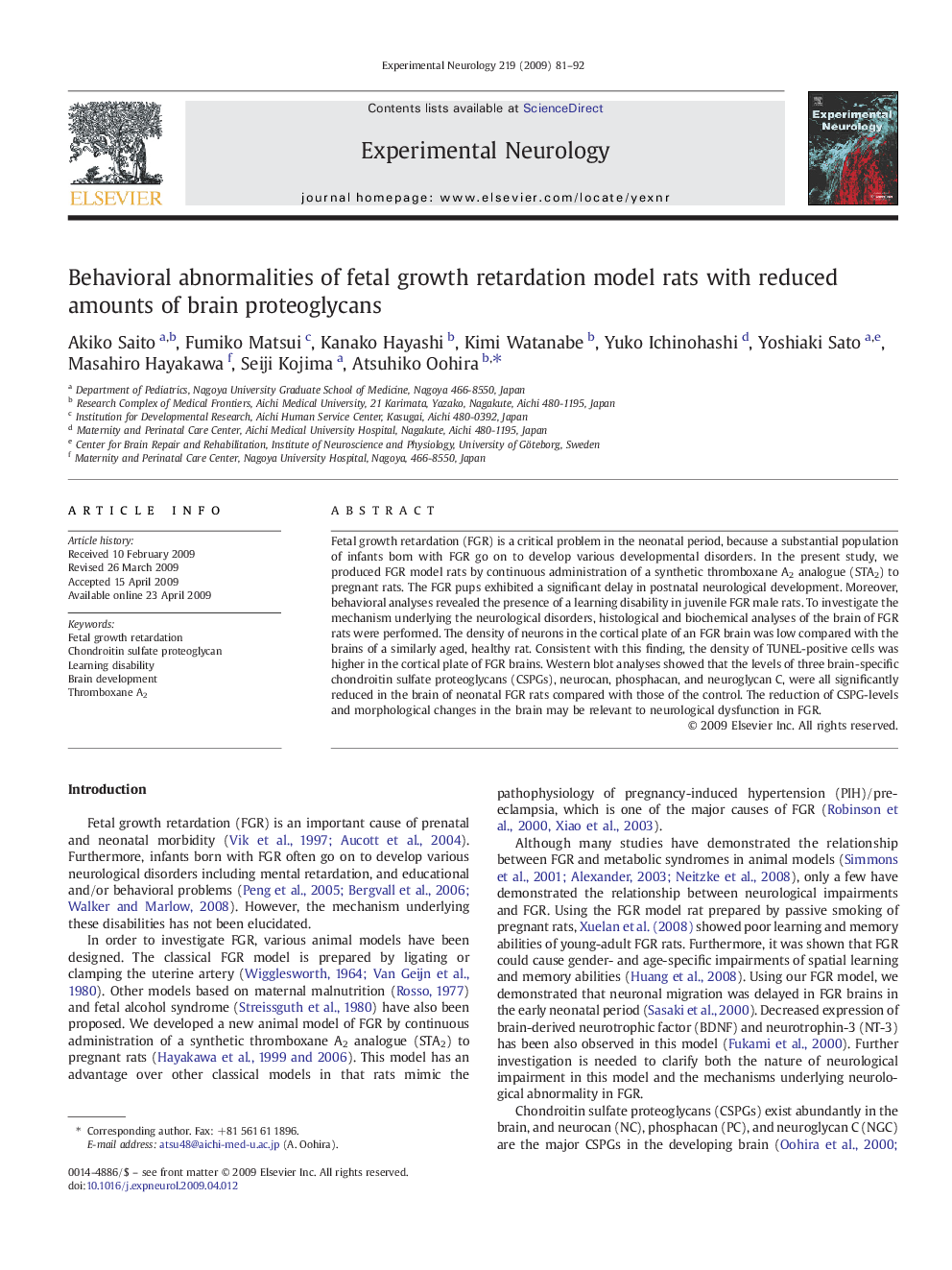| Article ID | Journal | Published Year | Pages | File Type |
|---|---|---|---|---|
| 3056285 | Experimental Neurology | 2009 | 12 Pages |
Fetal growth retardation (FGR) is a critical problem in the neonatal period, because a substantial population of infants born with FGR go on to develop various developmental disorders. In the present study, we produced FGR model rats by continuous administration of a synthetic thromboxane A2 analogue (STA2) to pregnant rats. The FGR pups exhibited a significant delay in postnatal neurological development. Moreover, behavioral analyses revealed the presence of a learning disability in juvenile FGR male rats. To investigate the mechanism underlying the neurological disorders, histological and biochemical analyses of the brain of FGR rats were performed. The density of neurons in the cortical plate of an FGR brain was low compared with the brains of a similarly aged, healthy rat. Consistent with this finding, the density of TUNEL-positive cells was higher in the cortical plate of FGR brains. Western blot analyses showed that the levels of three brain-specific chondroitin sulfate proteoglycans (CSPGs), neurocan, phosphacan, and neuroglycan C, were all significantly reduced in the brain of neonatal FGR rats compared with those of the control. The reduction of CSPG-levels and morphological changes in the brain may be relevant to neurological dysfunction in FGR.
